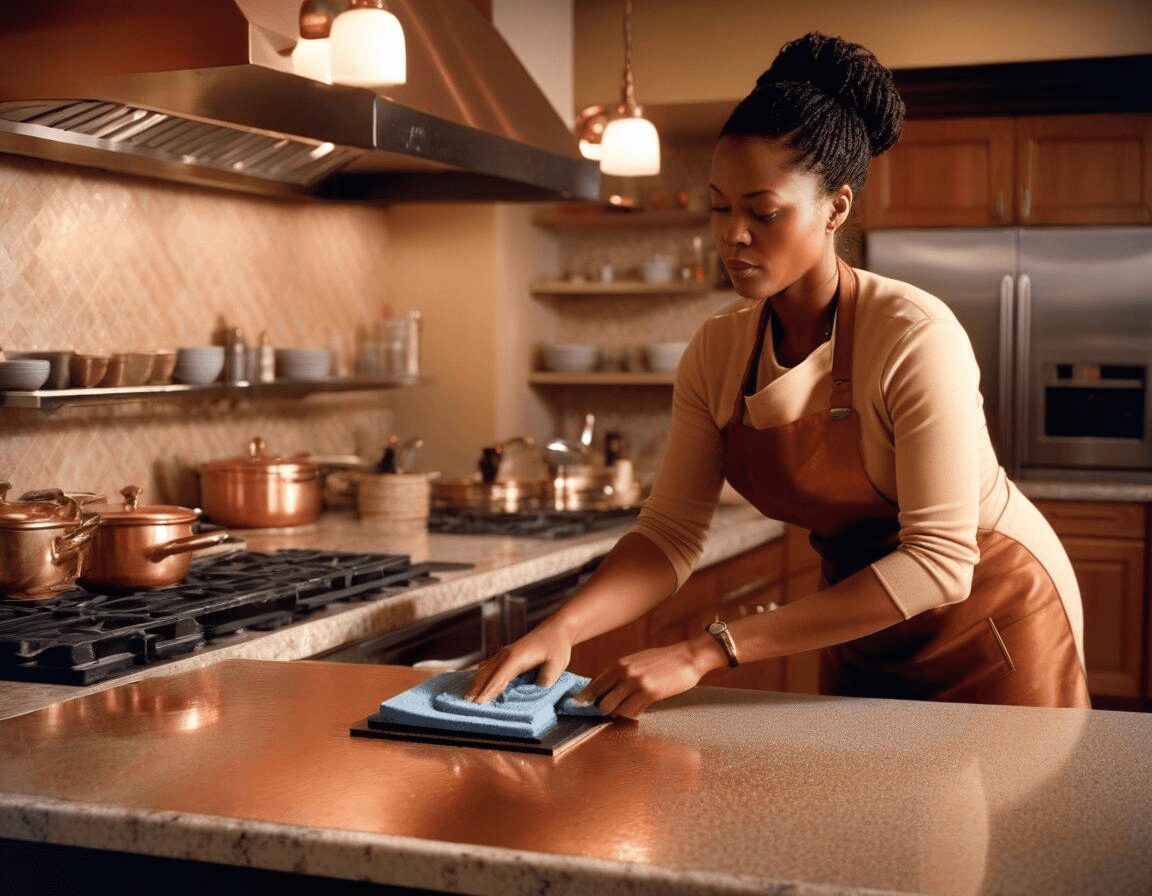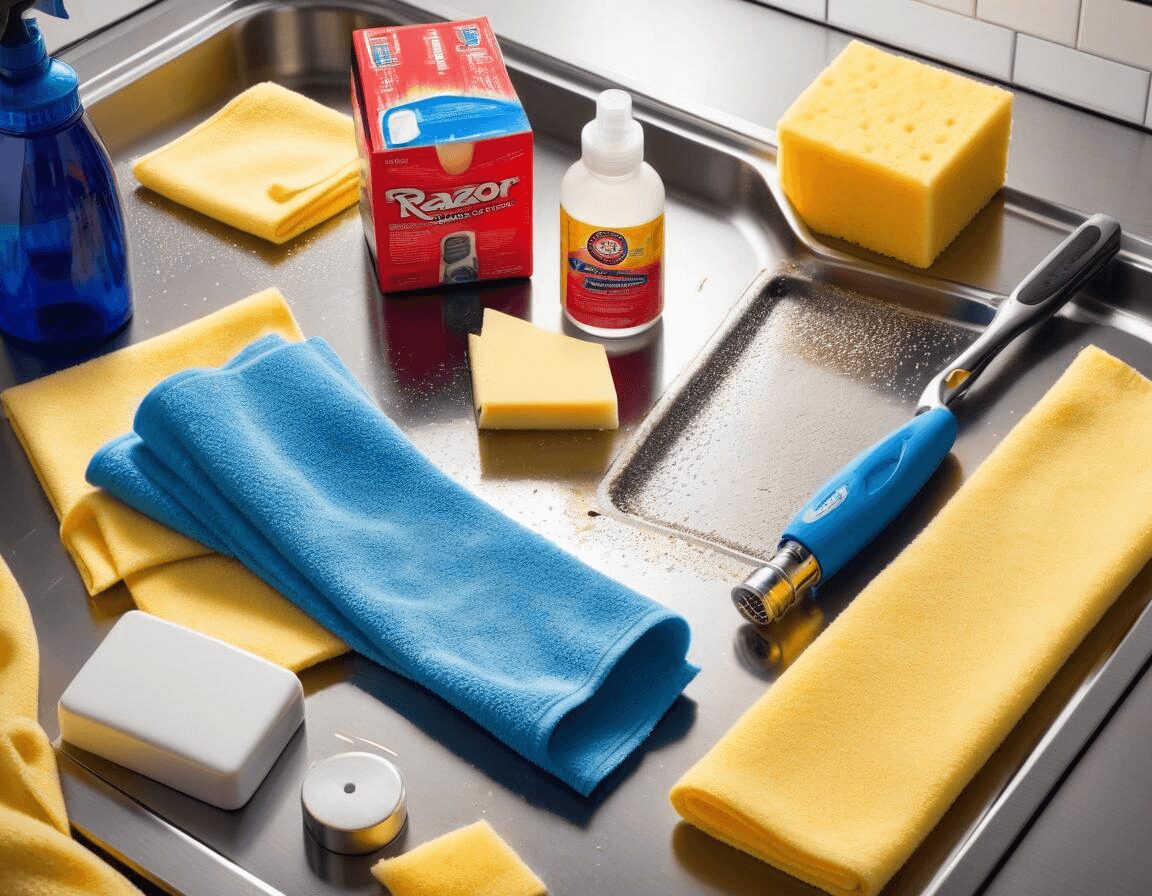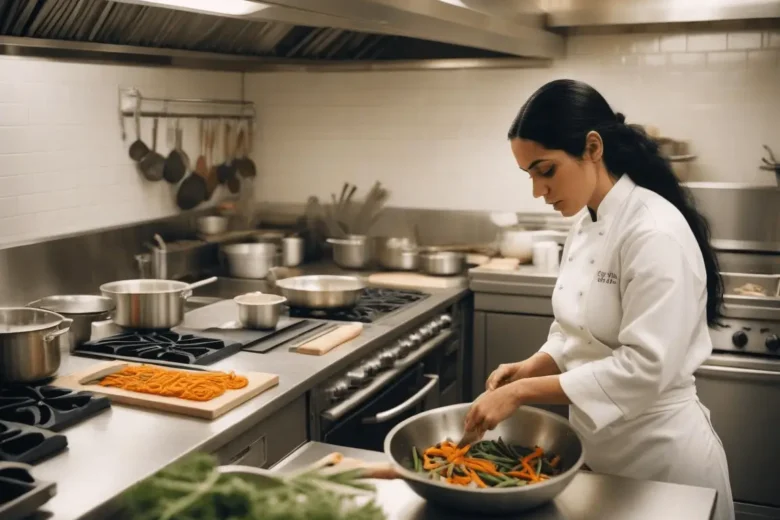If you’re looking for the most effective ceramic cooktop cleaning method, you’re in the right place. Ceramic cooktops are sleek and stylish, but they can be frustrating to maintain — especially when burnt-on stains, grease, or scratches start to build up. While many homeowners rely on harsh scrubbing or chemical sprays, restaurant kitchens use a smarter, safer approach that gets professional results.
In this guide, we’ll break down the exact ceramic cooktop cleaning method used in restaurants — including the essential tools, step-by-step instructions, eco-friendly alternatives, and critical mistakes to avoid. Whether you cook daily or just want to preserve the glossy look of your stovetop, this routine will help you keep it spotless without damage.
Let’s dive in.
The Cleaning Tools Restaurants Use (and Why They Work)
Professional kitchens don’t have time for trial-and-error cleaning methods — they rely on tried-and-true tools that deliver fast, safe, and spotless results. If you’ve ever wondered how restaurant stoves stay so clean, it often comes down to the gear they use. Here are the essential tools and why each one is key:
🧽 1. Non-Abrasive Sponges & Microfiber Cloths
A soft, non-scratch sponge is a must for ceramic cooktops. In restaurants, microfiber cloths are used for the final polish to leave a streak-free, mirror-like shine. Avoid anything that feels rough — even small abrasions can ruin the glossy finish of your stove over time.
🧼 2. Professional-Grade Ceramic Cooktop Cleaner
Most restaurants rely on specialized products like Cerama Bryte or Weiman Cooktop Cleaner. These are formulated specifically for glass and ceramic surfaces — powerful enough to remove residue but gentle enough to protect the surface.
💡 Tip: Always apply the cleaner to a cloth, not directly to the hot surface.
🔪 3. Single-Edge Razor Scraper (Used with Caution)
This is the secret weapon in restaurant kitchens. When used at a 45° angle and only on a cool surface, a razor scraper can remove burnt-on food or spills without scratching the ceramic. Look for models with a plastic handle for better grip and control.
⚠️ Always test the razor on a small area first and never apply excessive pressure.
🧤 4. Heat-Safe Gloves and Awareness of Temperature
In high-paced kitchens, timing matters. Chefs often clean right after cooking, but they use heat-resistant gloves and ensure the surface is safe to touch before scraping or spraying. At home, it’s better to wait until your cooktop is fully cool.
Step-by-Step: The Restaurant-Approved Cleaning Method

Ready to clean your ceramic cooktop like a pro? This is the exact method many restaurant kitchens use to keep their stovetops spotless without causing scratches or damage. Whether you’re dealing with a light grease film or baked-on food residue, this step-by-step process is both safe and effective.
✅ Step 1: Let the Cooktop Cool Completely
Never attempt to clean a ceramic cooktop while it’s still hot. Not only is it dangerous, but many cleaning agents can evaporate or burn on contact — leaving behind stains or damage. Wait until the surface is fully cooled before you begin.
🧴 Step 2: Apply Cleaner or DIY Solution
Spray a ceramic cooktop cleaner (like Cerama Bryte or Weiman) directly onto the dirty areas. Alternatively, you can make a DIY solution by mixing:
-
1 part white vinegar
-
1 part warm water
-
A drop of dish soap
Let the cleaner sit for 2–5 minutes to soften any residue.
🔪 Step 3: Use a Razor Scraper (If Needed)
For tough, burnt-on spots, use a razor scraper held at a 45° angle. Gently slide it across the surface to lift debris. Be careful to avoid digging in or dragging across clean areas.
💡 Pro Tip: Only use the razor on flat areas — avoid seams, trim, or beveled edges.
🧽 Step 4: Wipe and Buff with a Microfiber Cloth
Use a non-abrasive sponge or damp microfiber cloth to wipe away residue and cleaner. For a streak-free finish, buff dry with a clean microfiber towel in circular motions.
✨ Optional: Apply a Polish or Conditioner
Some professional kitchens apply a final cooktop conditioner to repel future stains and make the next cleaning easier. You can find these products at most home stores or online.
Mistakes to Avoid When Cleaning a Ceramic Stove Top

Ceramic cooktops are beautiful and efficient — but they’re also delicate. One wrong move can leave permanent scratches or discoloration. Even some “common” cleaning habits are actually harmful over time. Here are the top mistakes to steer clear of, even if you’re doing your best to keep your stove spotless.
🚫 1. Using Abrasive Scrubbers or Steel Wool
Steel wool and gritty pads may remove food — but they’ll also scratch the surface, permanently dulling your cooktop. Stick to soft sponges or non-scratch scrubbers like Scotch-Brite Non-Scratch Pads.
🚫 2. Cleaning While the Surface Is Still Hot
Spraying liquid cleaner onto a hot ceramic surface can cause burn marks or chemical stains. Some products even release fumes when heated. Always let your cooktop cool completely before cleaning. This also applies to DIY cleaners like vinegar.
🚫 3. Leaving Spills or Stains for Too Long
Allowing food, grease, or sugary spills to sit for hours (or days) can cause burn-in marks that are much harder to remove. Restaurant staff usually clean surfaces immediately after use — a habit worth adopting at home.
🚫 4. Using the Wrong Type of Razor
Not all razor blades are the same. Using a standard utility knife blade can cause damage. Instead, opt for a blade designed specifically for ceramic and glass surfaces, like Cerama Bryte’s Cooktop Scraper.
🚫 5. Skipping Routine Cleanings
Waiting until your cooktop looks dirty often means more scrubbing later — and more chance for damage. A quick daily wipe-down and a deep clean weekly can extend the life and look of your stove significantly.
Safe, Eco-Friendly Alternatives You Can Use at Home

If you prefer a natural approach to cleaning — or simply want to avoid harsh chemicals in your kitchen — you’re in luck. Many restaurant-level cleaning results can be achieved with eco-friendly ingredients you likely already have at home. These methods are not only safe for your family and pets but also gentle on ceramic surfaces.
🍋 1. White Vinegar & Baking Soda Paste
This classic combo works wonders on grease, grime, and burnt-on food.
How to use:
-
Sprinkle baking soda on the stained area
-
Spray white vinegar over it
-
Let it fizz for 5–10 minutes
-
Wipe clean with a damp cloth
It’s a simple, non-toxic solution that helps loosen residue without damaging your cooktop.
✅ For tougher messes, use cleaning-grade white vinegar (5% acidity or higher).
🌿 2. Lemon Juice and Cornstarch Polish
Lemon is a natural degreaser, and cornstarch acts as a polishing agent.
How to use:
-
Mix 2 tbsp lemon juice + 1 tbsp cornstarch
-
Apply gently with a soft cloth
-
Buff until your cooktop shines
This is great for giving your surface a fresh, clean scent and smooth finish.
💧 3. DIY Essential Oil Spray
For daily maintenance, a DIY spray made with essential oils like tea tree, lemon, or lavender adds disinfecting power and fragrance.
Recipe:
-
1 cup distilled water
-
2 tbsp vinegar
-
5–10 drops essential oil
-
Store in a spray bottle for daily use
🛑 Avoid citrus oils directly on the cooktop without dilution — they can be too strong and leave streaks.
✅ 4. Use Reusable Cloths Instead of Paper Towels
Switching to microfiber cloths reduces waste and enhances cleaning efficiency. They trap dust and grease better than paper towels and are machine-washable.
You can find affordable options like Amazon Basics Microfiber Cleaning Cloths.
Keeping your ceramic cooktop clean doesn’t have to be a frustrating chore — and it certainly shouldn’t involve scratched surfaces or burned-on stains. With the restaurant-approved method shared in this guide, you now have the tools and techniques to make your stove shine like new, using both professional products and eco-friendly DIY alternatives.
By avoiding common cleaning mistakes, using the right tools like a non-scratch sponge or razor scraper, and maintaining a regular routine, you can extend the life of your stove while keeping your kitchen spotless and safe.
Whether you cook daily or just want your kitchen to stay looking its best, this cleaning method is simple, effective, and proven in the busiest kitchens out there. Give it a try — your cooktop will thank you.
🔗 Want more smart cleaning tips and stove care guides?
Explore more at StovesHQ.com

